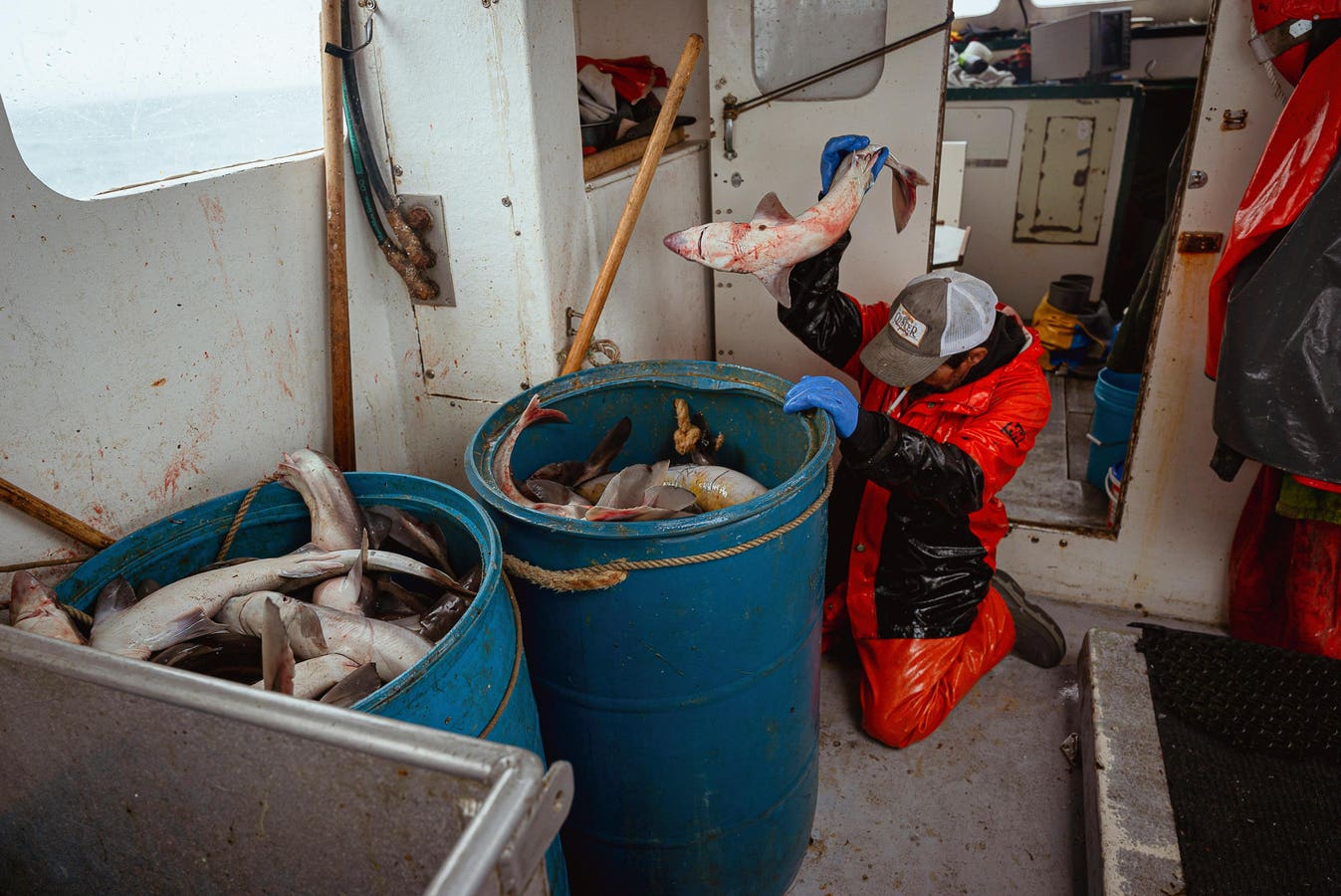A recent global study reviewed over 160 scientific papers covering 147 shark species, focusing on … More
Sleek and powerful, a single dorsal fin slices through deep blue waves before diving into deeper waters in search of its next meal. An evolutionary machine honed for millions of years, this young shark doesn’t know that hundreds of meters above, a longline bristling with baited hooks dangles in the current. An invisible wall between it and survival.
For many sharks, this is how the story ends. Even if they’re not the intended target of a fishing trip, they still get hooked, hauled in, and tangled in nets. In the past, that meant a death sentence. But today, in many parts of the world, rules known as “retention bans” say these sharks must be released back into the sea. It’s a hopeful idea: catch, release, and let them swim free.
But here’s the catch — literally and figuratively. A growing body of research shows that being released doesn’t always mean being saved.
Sharks are some of the most threatened marine animals on Earth, facing steep population declines due to overfishing and bycatch. While some sharks are caught intentionally, more than half are caught incidentally and then discarded. This often happens in longline and gillnet fisheries that target other species like tuna. In many places, fishers are required to release certain shark species rather than keeping them; these retention bans aim to protect vulnerable sharks by reducing the number that are landed and sold. But some die before even reaching the boat (called at-vessel mortality or AVM) while others die after being released, known as post-release mortality (PRM). These deaths are often due to stress, injury, or exhaustion. A recent study, led by PhD candidate Leonardo Feitosa at UC Santa Barbara Bren – Bren School of Environment, looked at 160 previous studies across 147 shark species to understand how often this happens and to model the effects of retention bans on shark mortality. Using this data, the team built predictive models to estimate how many sharks die after being caught and released, especially from longline and gillnet fishing. They then applied these findings to simulate what would happen under two scenarios: keeping all caught sharks or releasing them under a retention ban.
The results were mixed.
On average, retention bans led to a three-fold decrease in fishing mortality for most shark species. But not all species benefited equally. Sharks that live in shallow coastal areas and tend to be smaller often died at higher rates before they could be released. On the other hand, larger sharks that live in deeper waters were more likely to survive until release but still faced significant risk of dying afterward. Even with retention bans, 18% of the species studied would still experience overfishing, especially those that reproduce slowly or are already heavily fished. Species like oceanic whitetip, threshers, hammerheads, and sand tiger sharks — all considered threatened by the IUCN — are particularly vulnerable. Their populations grow slowly, so even low levels of fishing mortality can be dangerous, and the data showed that for these species, simply banning their retention won’t be enough to protect them. Some will continue to decline unless more is done to prevent their capture in the first place. That includes modifying fishing gear, changing where and when fishing happens, and improving how sharks are handled on board to increase their chance of survival after release.
The researchers ran detailed simulations using their data, comparing two scenarios: one where all … More
There’s also a big data gap. Most studies focus on industrial longline fisheries in deep ocean waters, where monitoring is more common. But in small-scale or nearshore fisheries, many vulnerable species like sawfish, guitarfish, and rays are caught and even more threatened than sharks. Yet they are rarely studied, and without better data on their survival after capture, it’s hard to say whether current policies are doing much to help them.
One issue is that most retention bans assume fishers will fully comply. But that’s not always realistic. Retention bans only work if fishers follow them, and in places where shark meat is an important food source or source of income, fishers may be reluctant to release catch, especially if there’s little oversight. In fact, some countries have less than 5% observer coverage on fishing vessels, making it difficult to monitor what’s actually happening at sea. There are also challenges in enforcing bans in small-scale fisheries that supply local markets and coastal communities. In these settings, compliance may only happen for shark species with little commercial value.
But even when the rules are followed to the letter, there’s a problem: retention bans don’t stop sharks from being caught in the first place. They don’t address how or why sharks are getting caught in the first place, meaning they don’t reduce how often sharks are hooked. That’s why experts, like the team behind this new paper, argue that retention bans should be combined with other management tools like time-area fishing closures, shark-friendly gear modifications, and clear bycatch limits. For example, using circle hooks instead of J hooks can reduce the chances of a shark swallowing the hook and suffering internal injuries. Shorter soak times for fishing lines can also reduce both AVM and PRM. Training fishing crews to handle and release sharks safely can also make a big difference in whether the animals survive.
Sharks have been swimming in Earth’s oceans for over 400 million years. But in just a few decades, industrial fishing has pushed many species to the brink. Retention bans were a meaningful start, but they’re not the finish line. Without additional efforts to reduce the actual capture of sharks and better monitor what happens after release, many threatened species will continue to decline. Protecting a species that plays a crucial role in our marine ecosystem will require a smarter, more coordinated approach that goes beyond just throwing them back. To make sure sharks are still swimming centuries from now, we need to rethink how we fish, where we fish, and who we’re trying to protect. And that means designing fisheries with shark conservation in mind from the start.









